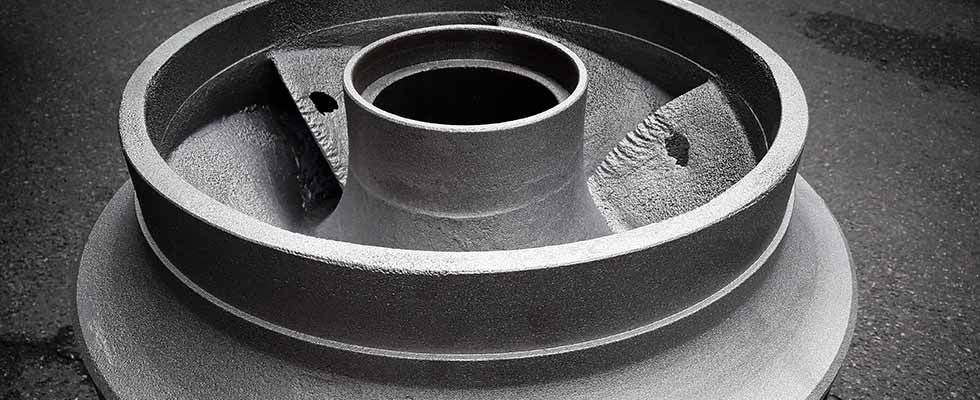
Excerpt from the August 2021 Pumps & Systems Article by Peter Wolff
Understand how cavitation can damage your system.
Cavitation is a condition that can affect any fluid flow system. Despite it being an ever-present threat, it is not well understood. In the simplest possible terms, cavitation involves the formation of water vapor bubbles that damage metal components when they collapse back to the liquid phase. Here are some common questions and answers that relate to cavitation.
Does a pump sound differently when it cavitates?
Yes. Cavitation has been described as sounding like gravel or coffee beans in the system.
How does cavitation damage system components?
One aspect of cavitation that is not widely understood is why these apparently harmless bubbles are so destructive when they implode. The answer is in the release of latent heat energy of condensation when the water vapor returns to its liquid phase. The collapse of the bubble and the energy released creates a small pressure jet that can strike a nearby solid surface, potentially damaging it. Because of the large number of bubbles formed in a cavitating system, these bubbles of water vapor can cause extensive damage to system components over time. Because cavitation takes place on the entry to a pump, the first system component that the bubbles encounter is the pump impeller.
Where else can cavitation happen?
Virtually anywhere that water is moving fast. The most well-known locations, aside from pumps, are ships’ propellers, control valve seats and small-bore orifice plates in water pipework.
What causes cavitation in pumps?
Cavitation in pumps is caused by excessively low pressure at the pump inlet. A blockage or restriction such as a clogged filter or part-closed valve mounted on the inlet to the pump can cause it. It can also happen when the pump is having to source its water supply from a sump installed below the pump—called a “suction lift.” Finally, hot water, close to boiling point, is a likely contributor.
Why does hot water allow pumps to cavitate more easily?
When water temperatures are low, the vapor pressure of water is also low. For example, at 32 F, the vapor pressure is a fraction of 1 pound per square inch (psi). As water temperatures rise, the vapor pressure climbs. At 212 F, the vapor pressure is the same as standard atmospheric pressure. At this temperature, when the vapor pressure is the same as the atmospheric pressure, the water will begin to vaporize—turn to gas, in layman’s terms. The commonly known term for this is boiling.
A Complete Line of Pumps for Industry
Vertiflo Pump Company’s Vertical Sump Centrifugal Pumps, Horizontal End Suction Centrifugal Pumps and self-priming pumps are delivered fast, usually in half the typical lead time. Vertiflo’s vertical sump pump line offers up to 3000 GPM, 250′ Heads and 26′ depth. The horizontal end suction pump line offers up to 3000 GPM and 300’ Heads.
Vertiflo pumps are designed for nonresidential applications and currently over 20,000 are operating successfully worldwide. Vertiflo is recognized as a quality manufacturer of dependable pumps, and continues to grow and encompass new applications in the pump industry.
